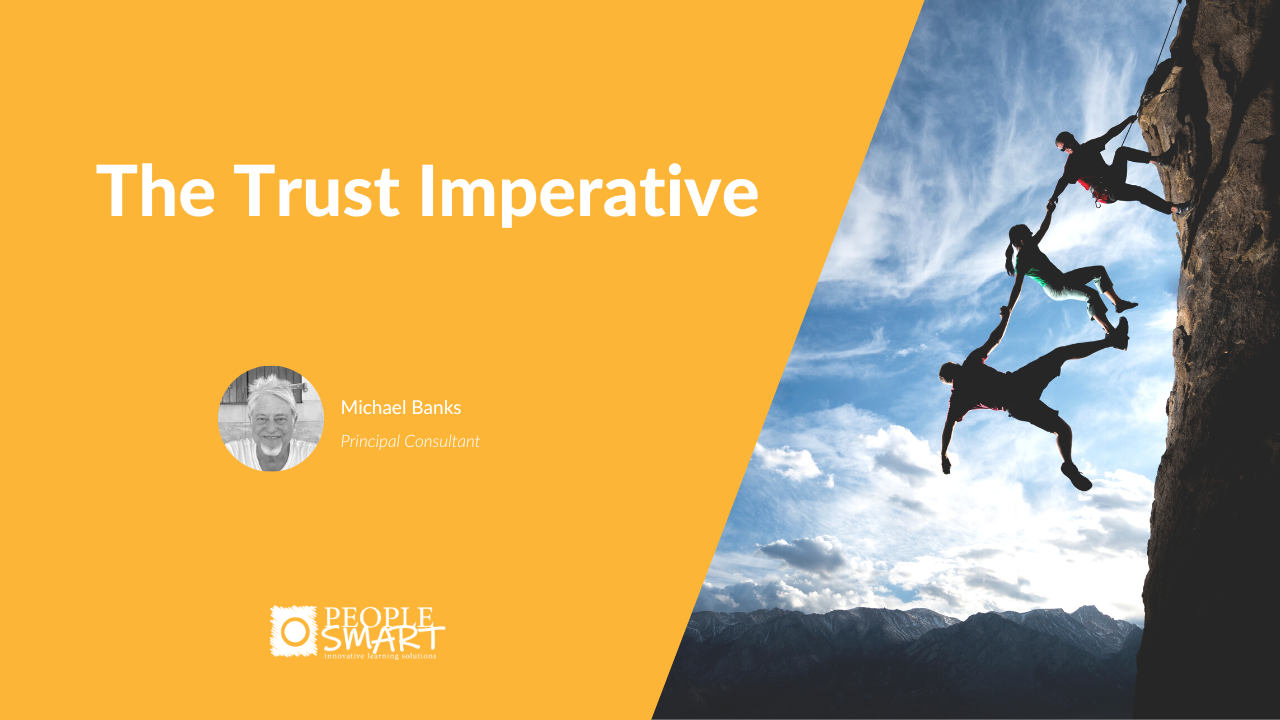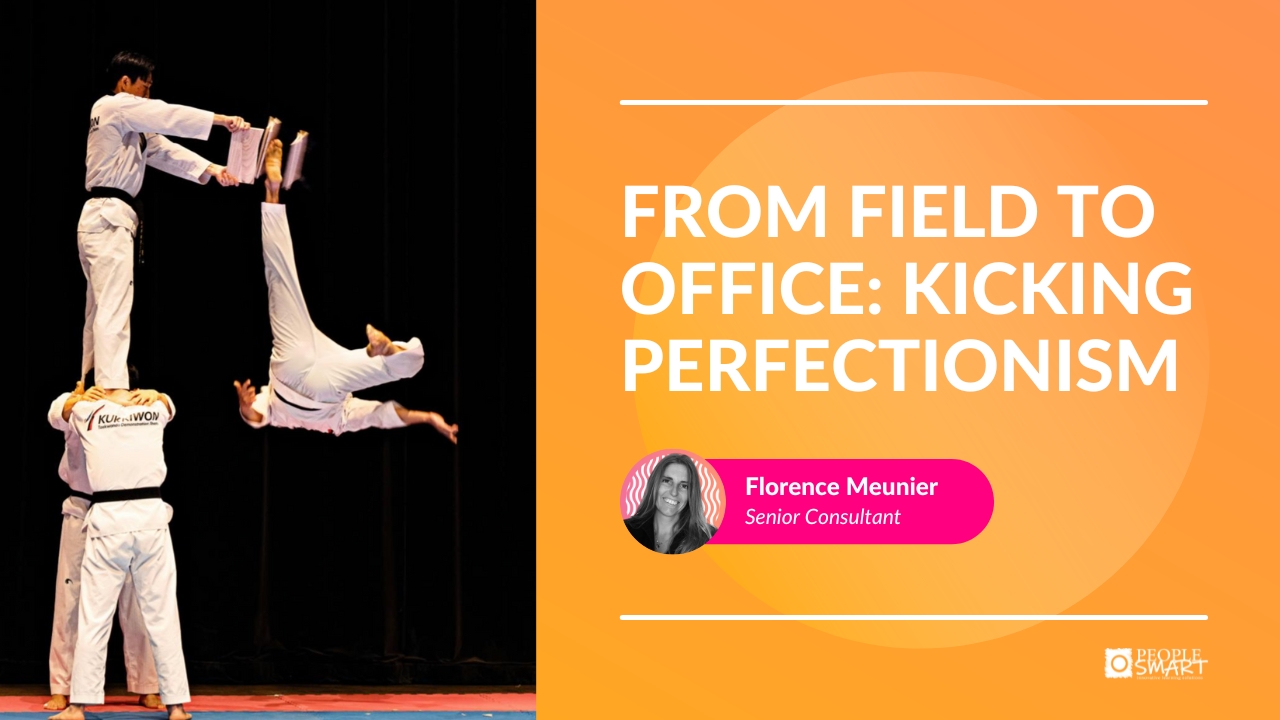The business case for building trust
The case for prioritizing trust building in any scenario is compelling. When compared with people at ‘low-trust’ companies, those at ‘high-trust’ organisations reported 74% less stress, 106% more energy at work, 50% higher productivity, 13% fewer sick days, 76% more engagement, 29% more satisfaction with their lives and 40% less burnout. Trust is a powerful thing! Leaders who want their employees to have a great ‘employee experience’ and be fully engaged know how trust plays a vital role in achieving this goal.
What makes trust building in a virtual environment more challenging? When someone is physically absent the amount of data you have on them is significantly reduced. This is especially true of someone who is introverted and tends to isolate themselves. Often false assumptions and negative judgments based on distance and lack of communication lead to conflict and unnecessary stress.
The Trust Equation
On the topic of distance and what a negative impact it can have, it is worth mentioning Professor David Maister’s simple yet brilliant model he calls ‘The Trust Equation’. Trustworthiness comprises four elements – Credibility, Reliability, Intimacy and Self-Orientation. The striking insight to be gained here is that someone can be good at the first three but if they are very self-centered and focused on themselves more than the person they are managing they can negate any trust built by the other three elements.
As you read the Best Practices (below) and (further on) the Characteristics of a Leader you can Trust, you can see that each item, in varying degrees, is about the leader having an outward focus, about serving ‘the other’ versus ‘the self’.
Best practices
Have a private one hour lunch conversation. I say one hour because such a potentially important conversation warrants this time! When I used to coach senior executives invariably this was the most effective tool for building trust. Even if the relationship is virtual you should prioritize an in person conversation whenever possible.
Schedule regular one to one Zoom calls. Again, allocate sufficient time for a deeper dialog if appropriate.
Recognize achievements.
Support employee’s well being. This means respecting and supporting the individual in all aspects of their lives and not just work.
Be authentic. Be willing to be transparent, ‘self disclose’, and self-deprecating. These subsets of authenticity make the leader more approachable and accessible, and enable the employee to feel happy to pick up the phone versus avoid or procrastinate.
Reflection
Let’s pause for a moment and think of a leader, past or present, who has proven to be trustworthy. What behaviors demonstrate(d) this? As an example I have been working with a CEO for the past few years who recognizes my strengths and trusts me to work virtually while putting my energy wholeheartedly into work. Her trust in me gives me the freedom to flourish and is a great motivator.
Next, think of an individual or group scenario, past or present, in which trust has broken down. What restored trust in that scenario? (If anything!). Have you ever been instrumental in restoring trust and, if so, how did you do it?
Real trust versus regulatory trust
The following is a powerful and critical distinction which you may have not considered. I certainly hadn’t until I read this article by Professor Sir Chris Ham of the King’s Fund. Among other themes it highlights the role of a positive culture in creating a trusting environment.
In 2006 Ed Smith, at the time Chair of NHS Improvement in the UK, wrote an article with Richard Reeves, in which he reminded his audience of the pernicious impact of excessive regulation. In their paper, Smith and Reeves contrast ‘regulated trust’ with ‘real trust’ which is based on a belief that people have a strong intrinsic motivation to perform to the best of their abilities. They argue that real trust is not fostered through reliance on rules but rather through the development of positive organizational cultures that encourage risk taking and avoid blame.
These cultures support people to act in a way that is trustworthy and to do the right thing. They encourage ‘behaviors and instincts’ that enable people to behave with integrity at all times. Positive cultures take time to develop and require sustained effort by leaders and followers at all levels. Rules and regulations designed to increase trust all too often have the opposite effect, resulting in over reliance on compliance rather than the nurturing of commitment. Real trust cannot be mandated and emerges through the actions of leaders who create the conditions in which people are supported to be effective.
Now let’s turn to an example of real trust in action and the results that created. Brazilian business visionary, Ricardo Semler is the former CEO and president of Semco, which under his leadership grew from $4 million in revenue to over $160 million in about 20 years. All of this without a mission statement, an org chart, or any written policies at all. And definitely without a rulebook!
So, what was the key to Semco’s success? One could point to various features of the radical industrial democracy that Semler ushered in during his tenure. But Semler himself epitomized it in his 2014 presentation at TED Global:
“We looked at it and we said, let’s devolve to these people, let’s give these people a company where we take away all the boarding school aspects of, this is when you arrive, this is how you dress, this is how you go to meetings, this is what you say, this is what you don’t say, and let’s see what’s left. And so, the question we were asking was, how can we be taking care of people? People are the only thing we have.”
I strongly recommend you dig deeper into the ways Semler built a culture based on trust and the performance miracles that resulted from this radical and bold approach.
Characteristics of a leader you can trust
You can be critical of her/him and not be punished
The leaders welcomes differences of opinion
You are fully listened to
They treat you as a whole human being – you can be honest safely about your private life as well as your professional life
You are not micromanaged
The inner work that must be done
Finally, there are the external behaviors that build trust and then there is the internal state that allows trust to grow and flourish. It is a leader’s duty to focus on their personal development as they take on more responsibility. If you are a micromanager then you should look into why that is. Varying degrees of insecurity, even fear, can make it hard for the leader to let go of wanting to control all the time. So the leader must cultivate a trust in themselves which in turn allows for trust to build with those they lead. This takes self-awareness and the courage to move away from their comfort zones in service of a culture of trust. Being open and vulnerable as a leader gives permission to others to be the same. Authenticity leads to trust.
Michael Banks
April 2023
.
.
.
.
.
If you want to know more about PeopleSmart and the services we offer reach out to us for a conversation: contact@peoplesmart.fr






